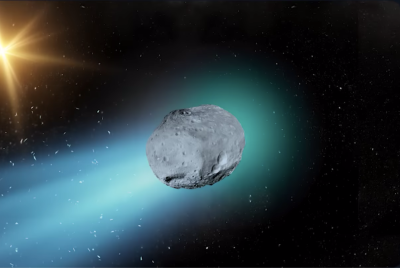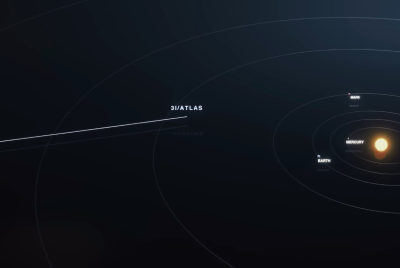ESA Uses Mars Rover Data To Track Comet 3I/ATLAS: Accuracy Leaps Ten-Fold
Track the journey of interstellar comet 3I/ATLAS. Learn how agencies are monitoring this Manhattan-sized visitor and what it means for planetary defence.

An object the size of Manhattan, born in a distant star system seven billion years ago, is currently hurtling through our cosmic neighbourhood. This is 3I/ATLAS, the third known interstellar visitor, and its rapid approach has triggered planetary defence protocols worldwide, especially after mysterious radio emissions were detected emanating from the comet.
How Mars Helped Chart the Precise Path of 3I/ATLAS
Until recently, predicting the exact path of 3I/ATLAS was a challenge for Earth-based telescopes. The European Space Agency (ESA) then executed an innovative manoeuvre, using its ExoMars Trace Gas Orbiter (TGO) to get a different view.
The probe, orbiting Mars, was about ten times closer to the comet than observers on Earth. This new angle enabled the triangulation of data, dramatically improving the accuracy of its predicted trajectory.
What was initially expected to be a modest improvement turned into a tenfold leap in precision. This breakthrough ensures astronomers can now aim their instruments with confidence to study the fleeting visitor before it disappears forever.
🚨 3I/ATLAS: Rock or Messenger? When Do We Find Out?
— 3I/ATLAS (@3IAtlas_Anomaly) September 23, 2025
3I/ATLAS is racing closer, and the question is profound: are we seeing a natural interstellar rock—or a technological messenger on the Loeb Scale?
The timeline for answers is fast approaching:
Oct 3, 2025 → Mars orbiters… pic.twitter.com/Rkuw2eyE8J
Why Is Interstellar Comet 3I/ATLAS Sparking Global Concern?
Since its discovery in July 2025, the interstellar comet 3I/ATLAS has been under intense scrutiny. Travelling at speeds exceeding 60 km/s, its unusual trajectory prompted its inclusion on the UN's list of space threats, leading NASA to intensify its monitoring efforts.
The scale of the object was put into perspective by SpaceX founder Elon Musk, who compared its size to the island of Manhattan. He noted that the potential for impact would depend on the celestial body's total mass.
Additionally, an observatory in South Africa has identified radio emissions from the comet, a phenomenon experts have attributed to natural processes as volatile gases are released, not artificial signals.
The Cosmic Composition and Strange Signals of 3I/ATLAS
Spectroscopic studies have peeled back the layers of 3I/ATLAS, revealing a composition of water, carbon monoxide, and methane. These compounds sublimate, or turn directly from solid to gas, as the comet interacts with the solar wind.
Images captured by the Hubble Telescope from 445 million kilometres away have shown similarities to comets originating within our own Solar System.
The detected radio signals are a direct result of these sublimation processes. While exciting, experts have ruled out any artificial origin, confirming the event results from natural interactions with the space environment.
Beyond the Threat: Why 3I/ATLAS Is a Vital Planetary Defence Test
Though 3I/ATLAS is not expected to collide with Earth, its journey has provided an invaluable exercise for planetary defence teams. The operation served as a crucial 'rehearsal' for tracking potentially hazardous objects.
ESA's Near-Earth Object Coordination Centre routinely calculates the orbits of asteroids and comets. This event demonstrated the value of triangulating data from a second location in space, honing skills that could be critical in a real threat scenario.
The success required a combined effort from multiple ESA teams and partners, tackling challenges that are usually negligible to achieve the highest possible accuracy. It was the first time astrometric measurements from a spacecraft orbiting another planet were officially accepted by the Minor Planet Centre (MPC).
What's Next for Tracking 3I/ATLAS and Future Threats?
The watch is not over. The comet is currently being observed by ESA's Jupiter Icy Moons Explorer (Juice) as it enters a more active state near the Sun, with data expected in early 2026.
Looking ahead, the agency is preparing its Neomir mission to address a known blind spot in our asteroid-detection capabilities. Positioned between the Sun and Earth, it will spot objects coming from the Sun's direction, providing at least a three-week warning.
Furthermore, ESA's Comet Interceptor mission is being prepared to one day visit an icy wanderer up close. With luck, its target is another interstellar object like 3I/ATLAS, connecting humanity with the wider universe on an unprecedented scale.
© Copyright IBTimes 2025. All rights reserved.





















